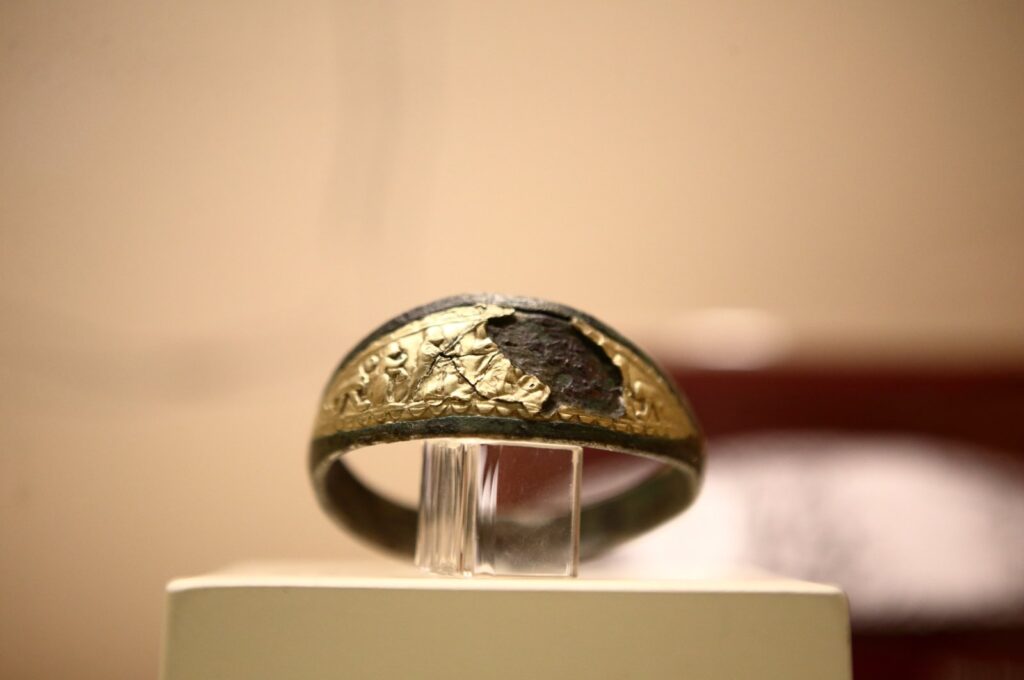Farmer Finds 3,300-year-old Rare Hittite Bracelet in Field in Turkey
A man ploughing his farm in Turkey’s central Çorum province discovered a rare 3,300-year-old ancient bracelet from the Hittite era.
The farmer, who lives in the Çitli village of Mecitözü district, found the bracelet while he was working on the farm and brought the ancient treasure to the Çorum Museum.
Experts found out that the artefact is from the ancient Hittite civilization and carried out restoration work. They then recorded it in the museum’s inventory and put it in the collection.
The beautiful bracelet is made out of bronze, nickel, silver and gold and is adorned with depictions of Hittite symbols, including imagery of the Itar/Auka and his servants Ninatta and Kulitta.

Resul Ibiş, an archaeologist at the museum, told Ihlas News Agency (IHA) that the bracelet has been put on display for visitors.
“After initial evaluations, we realized that this piece is unprecedented and we’ve never seen anything like this before,” he said, adding that it is from the 13th century B.C.
Ibiş also noted that the bracelet was deformed when it was brought to the museum and some of its pieces were missing, but they restored it.
The archaeologist also noted that there are very few pieces of Hittite-era jewellery and this piece sheds light on the jewellery styles of the civilization.
Çorum is home to the ancient Hittite city of Hattusa, one of the most significant tourist destinations in Turkey.

It serves as an open-air museum with 6-kilometer-long (nearly 4-mile-long) city walls, monumental city gates, a 71-meter-long (78-yard-long) underground passage, the Hittites palace in Büyükkale, 31 unearthed temples and ancient wheat silos.
It was added to UNESCO’s World Heritage List in 1986 due to its well-protected architectural structures and excavation site.
It also has also held UNESCO’s title of “Memory of the World” since 2001 with its cuneiform scripts representing the oldest known form of Indo-European languages.
Hattusa served as the capital of the Hittite Empire, which was one of the civilizations that played an important role in the development of urban life, in the late Bronze Age. The capital was the first national excavation site in Turkey.





